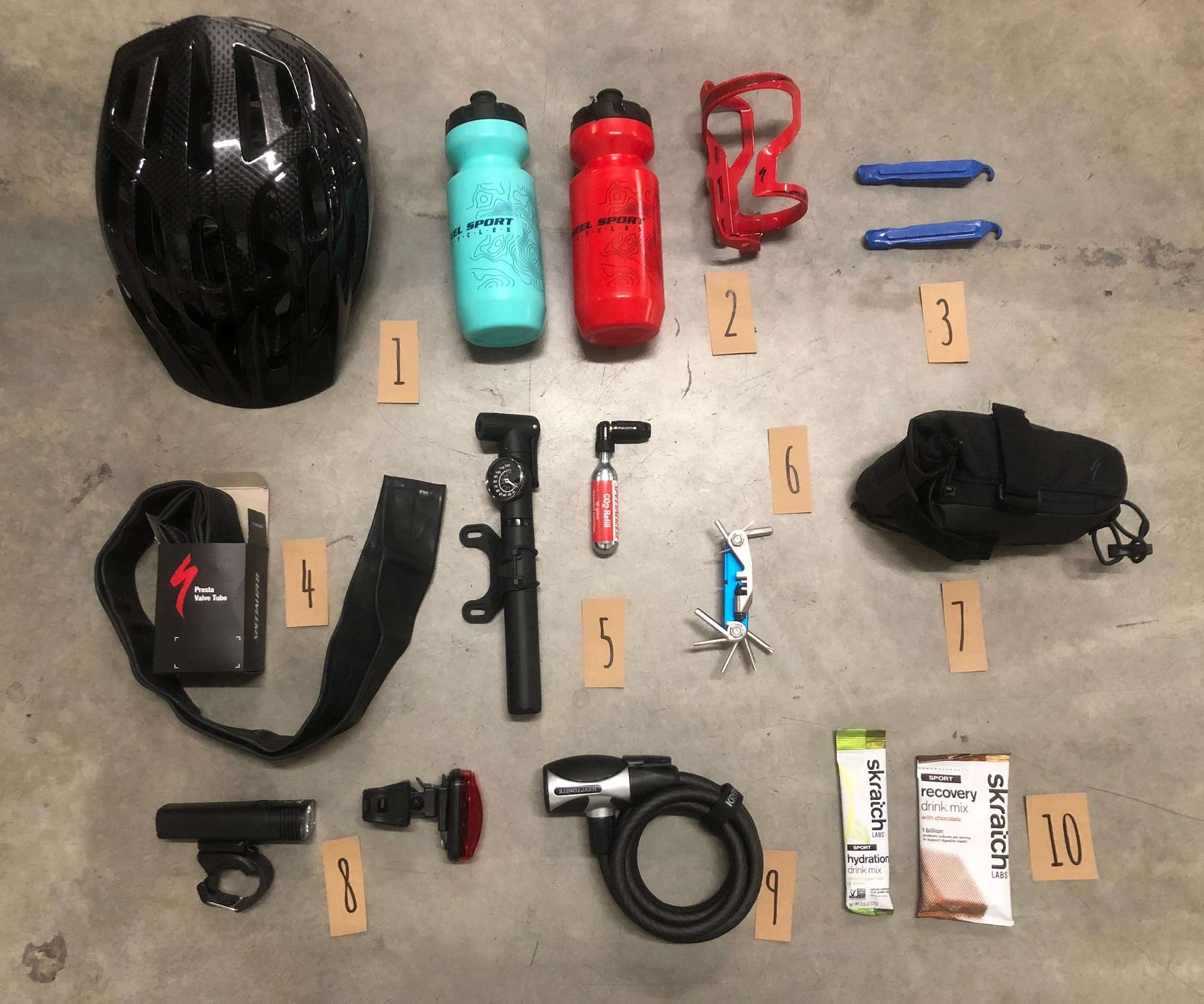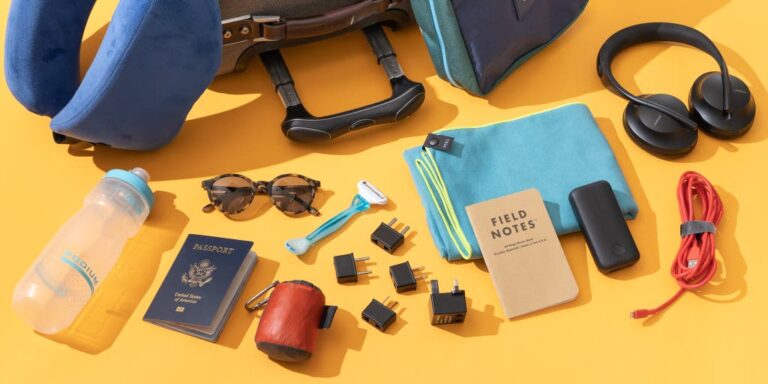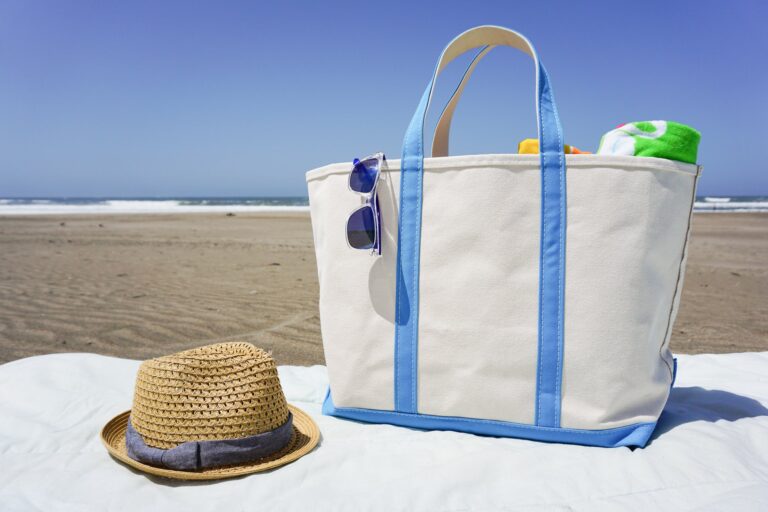For long-distance cycling, pack essential clothing, repair tools, hydration gear, and energy snacks. Choose lightweight, multi-functional items for efficiency.
Embarking on a long-distance cycling adventure demands thoughtful preparation to ensure you have all you need while keeping your load manageable. Cyclists must prioritize comfort, safety, and sustenance. Essential clothing typically includes moisture-wicking layers, a waterproof jacket, and padded shorts for protection and comfort.
A compact repair kit, with items like spare tubes, a multi-tool, and a pump, is crucial for handling bike maintenance on the go. Hydration systems, such as water bottles or bladders, help you maintain fluid levels during grueling rides, and energy-boosting snacks like bars or gels provide on-the-move nourishment. By focusing on these key items, riders can approach their journey with confidence, prepared for the miles that lie ahead.
Essential Gear Guide For Long-distance Cycling
Packing effectively is essential for long-distance cycling. The goal is to maintain a light gear setup while ensuring you have all the essentials for safety, comfort, and efficiency. Prioritize items that serve multiple purposes, are compact, and lightweight. Selecting the right gear involves careful consideration of the weather conditions, route terrain, and the duration of your trip.
Components like a reliable bike with suitable tires, a navigation system, and efficient lighting are imperative. Don’t overlook the need for a first-aid kit, toolkit for repairs, and extra tubes and pumps in case of punctures. Strike a balance between the weight of your gear and the necessity for safety and comfort.
Bike Preparation Essentials
Selecting an appropriate bicycle for long-distance cycling is critical. Ensure it’s suitable for the demands of prolonged rides. Durability and comfort are paramount—consider a lightweight frame with reliable gear shifting, and an ergonomic saddle.
Pack a set of essential bike maintenance tools to handle common issues. A multi-tool with Allen keys, a patch kit, a spare tube, and a mini-pump are necessities. Keep a chain tool and tire levers on hand for unexpected repairs. Routine checks will prevent disruptions during your journey.
| Spare Part | Quantity | Purpose |
|---|---|---|
| Inner Tubes | 2 | Quick replacement for punctures |
| Brake Pads | 1 set | Essential for consistent braking performance |
| Chain Links | 4 | For repairing broken chains |
| Spokes | 2-4 | Replacement for potential spoke damage |
Clothing And Protection
The cornerstone of any long-distance cycling trip is selecting the right attire. For oscillating weather conditions, it’s critical to choose weather-appropriate cycling attire that ensures comfort and performance. Breathable and moisture-wicking fabrics are a must-have for warm climates to keep the body cool and dry. Conversely, chilly rides necessitate thermal materials that provide essential insulation. Reflective elements on clothing also enhance visibility, contributing substantially to your safety on the road.
Safety gear for accident prevention includes necessities such as a high-quality helmet, gloves, and knee pads. These items provide significant protection in case of a fall and are indispensable for a safe journey. Strategic selection of gear can make a considerable difference in your overall cycling experience.
Layering strategies for temperature changes are crucial for long-distance rides. A base layer that wicks away sweat, a mid-layer that insulates, and a windproof or waterproof outer layer that shields against elements should be part of your cycling wardrobe. This approach allows you to adjust layers accordingly as temperatures fluctuate throughout the day, ensuring sustained comfort and focus on the journey ahead.
Navigation And Tech Gear
Ensuring navigational efficiency and staying technologically equipped is critical for any long-distance cycling adventure. A reliable GPS device is fundamental in maintaining the correct route and direction. Pairing your GPS with trustworthy mapping tools that have been designed specifically for cyclists will help prevent getting lost and enable you to plan your journey effectively.
It’s imperative to consider power sources to keep your gadgets charged. Carrying extra batteries and investing in solar chargers could be life-savers, especially in remote locations where conventional power sources are scarce. These options provide a layer of security, ensuring your navigation and communication tools remain operational throughout your trip.
Don’t forget about smart gadgets that can track your ride, such as fitness trackers and smartwatches, which offer a plethora of useful features like heart rate monitoring and distance tracking to aid in your cycling experience. They not only provide data on your ride but also ensure peace of mind by sharing your location with loved ones in case of emergencies.
On-the-road Nutrition And Hydration
Keeping hydrated is vital on long-distance rides, and there are multiple water storage solutions available for cyclists. Traditional water bottles and cages are common, but for longer trips, hydration packs offer greater capacity and ease of access. Hydration bladders can be slipped into a backpack, providing a hands-free drinking system through a hose. For those preferring bottles, handlebar-mounted systems allow for easy reach and storage.
- Energy bars and gels: Compact and packed with nutrients, they are perfect for a quick energy boost.
- Nuts and dried fruits: Offer both protein and natural sugars for sustained energy.
- Portable sandwiches: Whole grain bread with peanut butter or lean meats for longer-lasting fuel.
| Electrolytes and Supplements | Benefits |
|---|---|
| Salt tablets | Prevent cramps and maintain electrolyte balance. |
| Magnesium supplements | Support muscle function and energy production. |
| Isotonic drinks | Quickly replace fluids and minerals lost through sweat. |
Comfort And Convenience Items
Long-distance cycling demands comfort for peak performance. Riders should consider various seating options to ensure a comfortable journey. Investing in a quality saddle that fits the anatomical needs can prevent discomfort and allows for prolonged periods of cycling. Many opt for gel covers or padded shorts to pad the ride.
Regarding handlebar setups, adjusting the height and angle is crucial for both comfort and ergonomics. Cyclists might add bar ends or aero bars for multiple grip positions, which is essential to avoid hand fatigue, ensuring a balance between control and relaxation.
| Storage Type | Advantages | Disadvantages |
|---|---|---|
| Panniers | Ample storage, bike balance, easy on the body | Can affect bike handling |
| Backpacks | Portability, useful off the bike | Can cause back and shoulder strain |
Selecting between panniers and backpacks for storage is also a consideration. Panniers are excellent for heavy loads and stable bike balance, while backpacks are beneficial for their ease of portability when off the bike. The right choice relies on the duration of the trip and personal comfort preferences.
Personal Care And First Aid
Long-distance cycling demands not only physical preparation but also the right gear for personal care and first aid. Ensuring skin protection is crucial, hence don’t forget to pack a broad-spectrum sunscreen with a high SPF to shield yourself from harmful UV rays. Additionally, consider lip balm with SPF and lightweight, long-sleeved clothing for added coverage.
Due to the unpredictable nature of the road, compact first aid kits are indispensable. Your kit should include antiseptic wipes, sterilized gauze, adhesive bandages, antibacterial ointment, and blister plasters, tailored to fit within your bike’s storage without adding excessive weight or bulk.
Hygiene is paramount on multi-day tours, thus select biodegradable soap, microfiber towels, and wet wipes for a minimal environmental impact. A travel-sized hand sanitizer is also essential to maintain cleanliness when access to water is scarce or absent.
Overnight Gear For Multi-day Trips
Preparing for a multi-day cycling trip means packing wisely to ensure both comfort and convenience. For nights under the stars, a lightweight tent is essential, offering a balanced blend of low weight and durability. Select a tent that’s quick to assemble after a long day’s ride. Complement this with a compact sleeping bag, chosen for its appropriate rating to keep you warm during the cooler nights.
Don’t overlook the importance of portable cooking equipment. A small stove, lightweight pot, and utensils allow the freedom to cook nutritious meals, necessary to refuel after grueling hours on the saddle. Prioritize cooking gear that’s designed for backpacking, optimizing for space and weight.
Lastly, safeguarding your ride and gear is paramount. Invest in quality security items for peace of mind when you’re off the bike. A sturdy bike lock and a lightweight, theft-proof bag to secure personal items are indispensable components of your packing list.
Emergency Preparedness And Repair Kit
Being prepared for unexpected situations is crucial on long-distance cycling trips. An essential component of your gear should include a comprehensive emergency repair kit. Ensure you carry a variety of tools such as a multi-tool with Allen keys, tire levers, and a portable bike pump. Patching kits are indispensable, along with a spare inner tube and a chain repair tool.
Don’t underestimate the temperamental nature of the weather; a lightweight, waterproof rain cover can guard against the elements. Likewise, arm and leg warmers provide a layer of protection and warmth if temperatures drop unexpectedly.
| Item | Utility |
|---|---|
| Multi-tool | For making adjustments and repairs |
| Patching Kit & Spare Tube | For handling tire punctures |
| Rain Cover | To stay dry during rainfall |
| Warmers | To maintain body temperature |
Finally, having a well-thought-out emergency contact plan can make all the difference in critical situations. Equip yourself with a reliable GPS device, keep your mobile phone charged, and consider carrying a portable battery. In remote locations where signals wane, satellite communicators can be lifesavers.


Credit: www.wheelsportbikes.com
Sustainable Cycling Practices
Packing for a long-distance cycling adventure requires meticulous planning, especially when embracing sustainable practices. Opt for eco-friendly gear such as biodegradable soaps, solar chargers, and durable, repairable equipment to minimize environmental impact. Prioritize multi-use items to reduce the need for disposables.
With regards to disposal options, try to find recycling facilities along your route for any unavoidable waste. Pack a compact reusable trash bag to ensure all waste can be correctly disposed of or transported to a suitable facility.
- Leave no trace by disposing of all waste properly and respecting wildlife and ecosystems.
- Avoid single-use plastics by using refillable water bottles and food containers.
- Consider compressed and lightweight packaging for food and supplies to save space and minimize waste.
- Embrace digital tools like maps and apps to reduce paper waste.
Frequently Asked Questions On What To Pack For Long-distance Cycling
What Essentials Are Needed For A Cycling Trip?
When embarking on a long-distance cycling trip, essentials include a helmet, proper clothing, bike repair kit, hydration pack, nutrition (energy bars, snacks), and navigation tools (GPS or map).
How To Select The Best Cycle Touring Clothing?
Select cycle touring clothing that is breathable, comfortable, and weather-appropriate. Look for quick-dry fabrics, padded shorts for comfort, and layers to adjust to temperature changes.
What Are Top Navigation Tools For Cyclists?
Top navigation tools for cyclists are GPS devices designed for bikes, smartphone apps with offline maps, handlebar-mounted bike computers, and traditional paper maps for backup.
How To Pack Light For A Long-distance Ride?
To pack light for a long-distance ride, choose multipurpose gear, wear the heaviest items, and carry only the essentials. Opt for travel-sized toiletries and compact, lightweight tools.
Conclusion
Embarking on a long-distance cycling journey is an adventure that demands preparation. With the right gear, you’re set for comfort and efficiency. Remember, packing smart is as crucial as the ride itself. Tailor your kit to the journey ahead and pedal on with confidence, ready for the miles that await.






